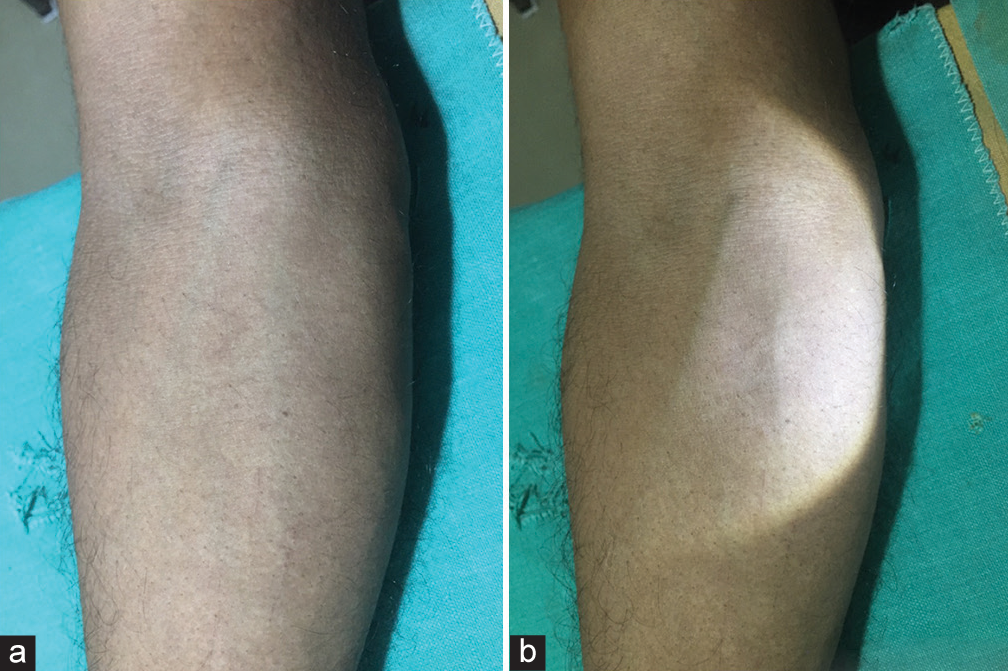Translate this page into:
Innovative use of tangential light for easy venesection

*Corresponding author: Muhammed Mukhtar, Department of Dermatology, Mukhtar Skin Centre, Katihar, Bihar, India. drmmukhtar20@gmail.com
-
Received: ,
Accepted: ,
How to cite this article: Mukhtar M, Mukhtar S. Innovative use of tangential light for easy venesection. CosmoDerma. 2024;4:81. doi: 10.25259/CSDM_96_2024
PROBLEM
Venesection is a common method in medicine for collecting blood for various blood tests and therapeutic purposes, such as platelet-rich fibrin and platelet-rich plasma, particularly in dermatology. Even when the arm is tied with a rubber band, the engorged veins may not always be felt or visible in normal lighting conditions, potentially leading to venesection difficulties. In this circumstance, the location of the vein and its path must be established by palpating the skin. In this condition, venesection is often performed blindly, which leads to repeated failures and makes the process painful and non-aseptic. There are several types of vein finders on the market that use infrared technology.[1,2] However, they are expensive and difficult to obtain in clinics.
SOLUTION
To deal with this difficult situation, we employed a little torch. Tangential light is a light that is projected at a very acute angle, that is, along the skin’s surface, to highlight minute lesions, structure, and movement on the skin surface by creating more visible, bigger shadows.[3,4] First, the arm is encircled in a rubber band to engorge the major forearm veins (cephalic and median) and make them visible. However, this strategy has sometimes failed [Figure 1a]. In this case, tangential light is projected onto the skin’s surface to highlight and make the vein more visible [Figure 1b]. Following this, the region is made aseptic, and venesection is performed without difficulty or confusion. Thus, using tangential light, vein traces can be easily identified for venesection.

- (a) The visibility of vein is less in normal or room light and (b) the visibility of vein is better in tangential light.
Ethical approval
The Institutional Review Board approval is not required.
Declaration of patient consent
The authors certify that they have obtained all appropriate patient consent.
Conflicts of interest
There are no conflicts of interest.
Use of artificial intelligence (AI)-assisted technology for manuscript preparation
The authors confirm that there was no use of artificial intelligence (AI)-assisted technology for assisting in the writing or editing of the manuscript and no images were manipulated using AI.
Financial support and sponsorship
Nil.
References
- Low cost blood vein detection system based on near-infrared LEDs and image-processing techniques. Polish J Med Phys Eng. 2020;26:61-7.
- [CrossRef] [Google Scholar]
- Difficult venesections: An easy solution. J Cutan Aesthet Surg. 2024;17:158-9.
- [CrossRef] [PubMed] [Google Scholar]
- Uses of tangential lighting for skin examination: A clinical pearl. J Cutan Aesthet Surg. 2023;16:349-50.
- [CrossRef] [PubMed] [Google Scholar]
- Clinical pearl: Tangential lighting is a simple and fast technique for evaluating canities. CosmoDerma. 2022;2:112.
- [CrossRef] [Google Scholar]





